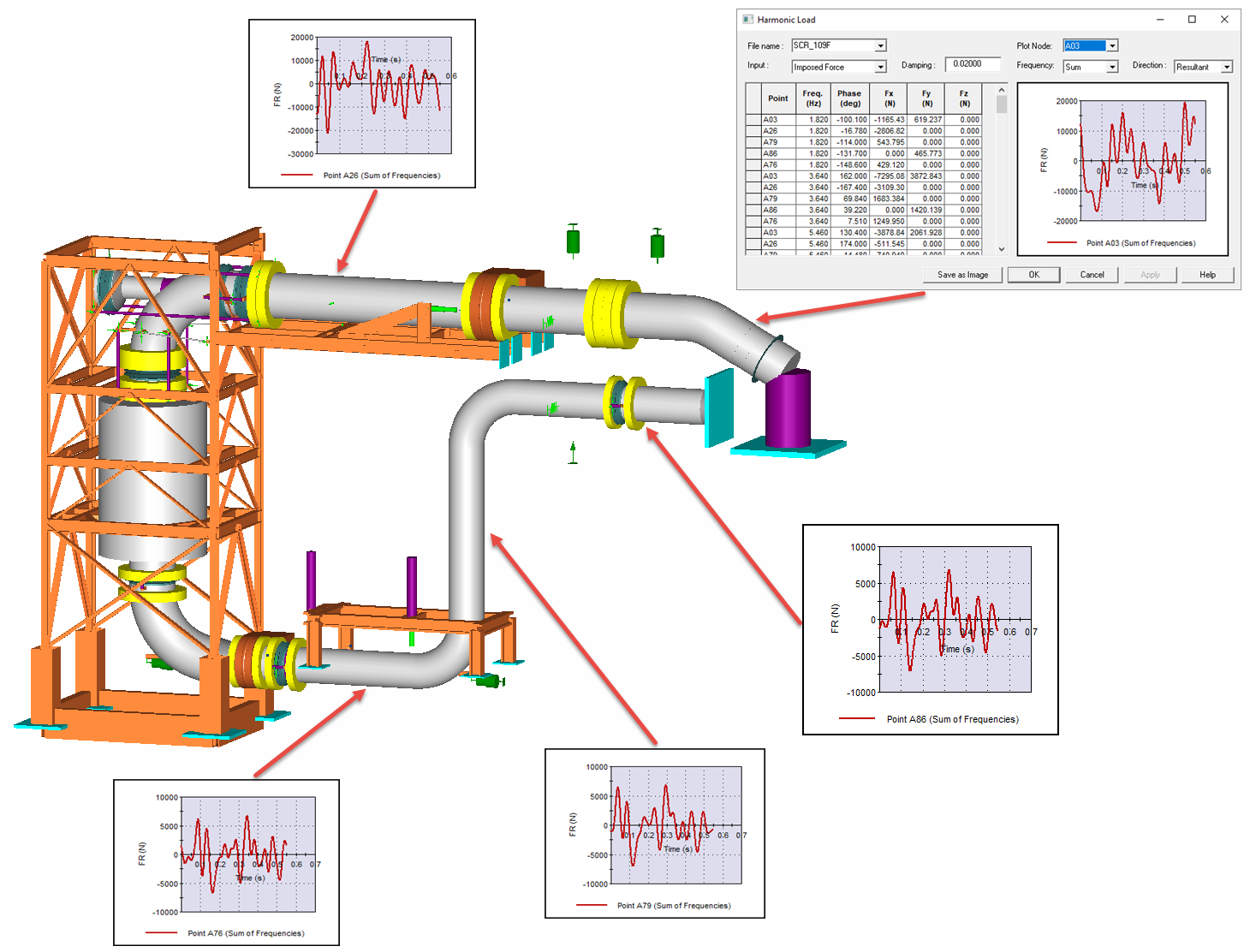AutoPIPE can apply up to 10 Harmonic loads in a calculation. These loads can be:
Harmonic motion is a circular motion that gradually accelerates and slows down. This type of movement is characteristic of natural phenomena. It is expressed mathematically as a sinusoidal function, which consists of two parts: amplitude and circular frequency.
The harmonic forces that generate this movement can be:
AutoPIPE allows defining not only the main sine wave, but also defining the harmonics at each application point to define the true form of application of the function. This is a typical case of forces caused by reciprocating compressors, in which the rebounding waves create complex shapes.
On the right we can see two models. The first is from AutoPIPE and corresponds to the suction of a compressor. The lower image is the same model that has been imported into PULS and into which the fluid and compressor data have been entered for acoustic analysis and for calculating harmonic forces.
PULS is a Bentley Systems program for acoustic analysis of piping systems. The AutoPIPE and the PULS have a bi-directional interface. Models created in AutoPIPE can be read by PULS to enter fluid data and pulsation sources. Once the harmonic forces have been calculated, they are recorded in a file that is read by AutoPIPE. The node numbers are kept in the PULS, so the forces are displayed on the correct nodes automatically.
When conducting studies with harmonic loads, it is very important that the stiffness of the supports is correct. And the results will be more real if we include the support structure and the mass of the entire system.
An exhaust gas treatment system in an electricity generation plant had strong vibrations. The piping system was modelled in AutoPIPE and the structure in STAAD.Pro.
When performing the modal analysis, several natural frequencies of the combined system were observed close to the motor frequency. The generator engine was a unit of about 40 MW and an exhaust gas pulsation frequency of 10.91 Hz.
The piping model was exported to PULS and by modelling the engine cylinders as compressor cylinders, maintaining the total flow rate of the exhaust gases and the exhaust conditions of these from the engine.
The piping system to the SCR (Selective Catalytic Reduction) consists of DN2000 (80 ") pipes at temperatures close to 500ºC, so it has expansion joints to compensate for the thermal expansion of the pipe.
In PULS, the loads on the straight sections have been calculated and the harmonic loads file for AutoPIPE has been saved.

Harmonic forces location in AutoPIPE. The piping model has been combined with that of STAAD.Pro to have the real flexibility and the flexibilities of the connections to the main system have been modelled.
As a result of these modifications the vibrations were reduced to 1/20 of the original vibrations and the system could be put into operation safely. This project is an example of the collaboration between three Bentley programs: AutoPIPE, STAAD and PULS.